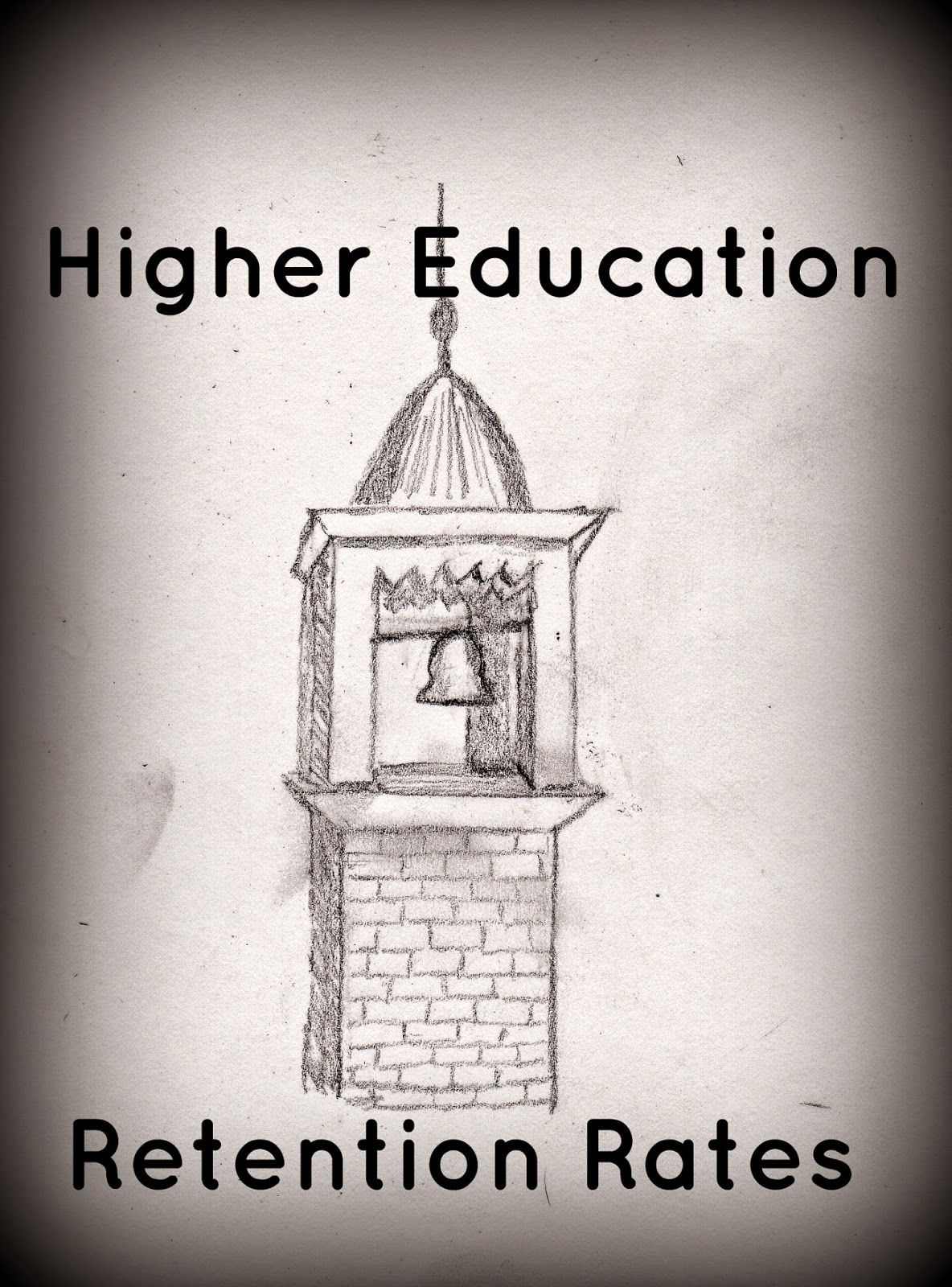Dropout rates
are a primary concern for universities and
governments that want to create accountability in higher education.
How dropout rates are defined has a large impact on the future
success of schools and may influence those that will be around in the future.
Some have argued
that the timetables
and lack of understanding put online schools at a disadvantage under definitions more in tune with the needs
of traditional schools.
How Drop Out Rates are Defined
The way in which dropout rates are set can make a large difference in the final rate. For example, if a dropout rate is by course level it will have one value while if it is calculated over a year, or two years, will have another. If calculated over longer periods of times the rates may capture students who bounce in and out of classes but have not given up on their education. When a student drops is confusing.
The government requires the numbers to be calculated each year. These numbers create a rate that is compared with other universities to determine the schools' value. What they don't compare is the background and demographics of the students attending different types of schools and it impacts short-term retention. Some students don't have the full freedom or support to attend college all the way throughout without working.
Different Numbers for Online and Traditional Universities
A study conducted in Spain found that dropout rates would better reflect what is going on if there were a separate definition for online universities (Grau-Valldosera& Minguillon, J. (2014). They believe that the online method of learning is very different from brick-n-mortar institutions and having the same definition doesn’t make a lot of sense.
Students in the online world come from a different background that makes the virtual educational process different than traditional universities. Trying to force online schools into brick-n-mortar models is unfair. As traditional schools move more into online education, they may find similar inaccuracies in reporting.
Online Students are Unique
Students in the online world are more transient and will sometimes attend a few classes and then disappear for a couple of classes before returning. The measurement should be different as those engaged in traditional schooling may never return to an institution once they leave as larger barriers to reentry exist.
There is also another problem related to the preparedness of students. Up to 1/3 of students who enter college are not prepared for higher education through their standard high school education (McMahon, 2015). If online education is serving students with multiple interests and under-served demographics the numbers may be indicative of the challenges in their student populations.
As online schools become more prominent, the very nature and face of education will likely change to incorporate new methods of school evaluation. At present traditional schools are defining the dropout rates leaning heavily in their favor and may not reflect what is occurring in online schools. Coming to a stable definition that reflects both mediums is necessary for an accurate and fair assessment of school quality.
Grau-Valldosera, J. & Minguillion, J. (2014). Rethinking dropout in online higher education: the case of Universitat Oberta De Catalunya, International Review of Research in Open and Distance Learning, 15 (1).
McMahon, M. (2015). Underprepared college students. Research Starters, Education.
How Drop Out Rates are Defined
The way in which dropout rates are set can make a large difference in the final rate. For example, if a dropout rate is by course level it will have one value while if it is calculated over a year, or two years, will have another. If calculated over longer periods of times the rates may capture students who bounce in and out of classes but have not given up on their education. When a student drops is confusing.
The government requires the numbers to be calculated each year. These numbers create a rate that is compared with other universities to determine the schools' value. What they don't compare is the background and demographics of the students attending different types of schools and it impacts short-term retention. Some students don't have the full freedom or support to attend college all the way throughout without working.
Different Numbers for Online and Traditional Universities
A study conducted in Spain found that dropout rates would better reflect what is going on if there were a separate definition for online universities (Grau-Valldosera& Minguillon, J. (2014). They believe that the online method of learning is very different from brick-n-mortar institutions and having the same definition doesn’t make a lot of sense.
Students in the online world come from a different background that makes the virtual educational process different than traditional universities. Trying to force online schools into brick-n-mortar models is unfair. As traditional schools move more into online education, they may find similar inaccuracies in reporting.
Online Students are Unique
Students in the online world are more transient and will sometimes attend a few classes and then disappear for a couple of classes before returning. The measurement should be different as those engaged in traditional schooling may never return to an institution once they leave as larger barriers to reentry exist.
There is also another problem related to the preparedness of students. Up to 1/3 of students who enter college are not prepared for higher education through their standard high school education (McMahon, 2015). If online education is serving students with multiple interests and under-served demographics the numbers may be indicative of the challenges in their student populations.
As online schools become more prominent, the very nature and face of education will likely change to incorporate new methods of school evaluation. At present traditional schools are defining the dropout rates leaning heavily in their favor and may not reflect what is occurring in online schools. Coming to a stable definition that reflects both mediums is necessary for an accurate and fair assessment of school quality.
Grau-Valldosera, J. & Minguillion, J. (2014). Rethinking dropout in online higher education: the case of Universitat Oberta De Catalunya, International Review of Research in Open and Distance Learning, 15 (1).
McMahon, M. (2015). Underprepared college students. Research Starters, Education.




